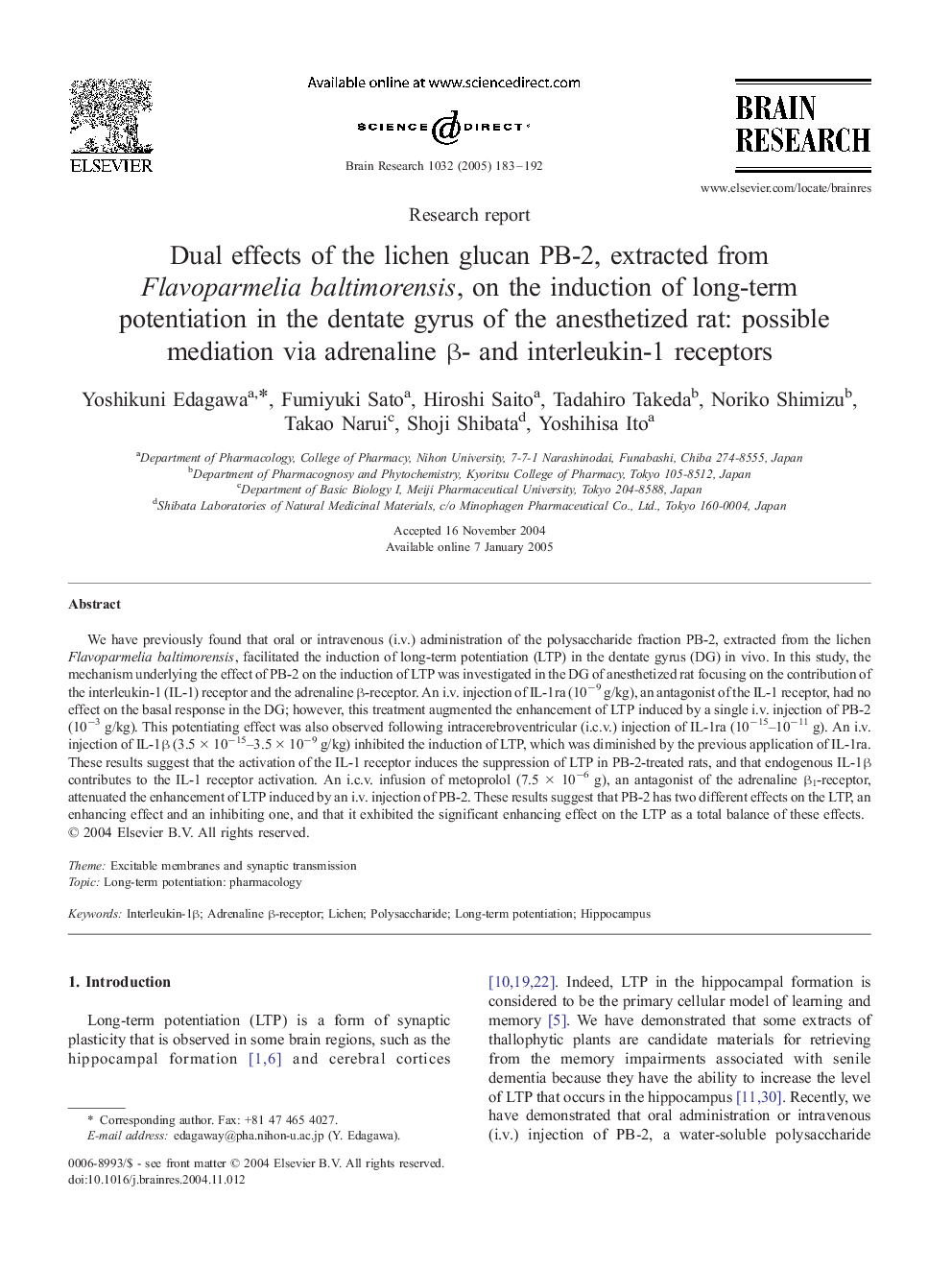| Article ID | Journal | Published Year | Pages | File Type |
|---|---|---|---|---|
| 9416690 | Brain Research | 2005 | 10 Pages |
Abstract
We have previously found that oral or intravenous (i.v.) administration of the polysaccharide fraction PB-2, extracted from the lichen Flavoparmelia baltimorensis, facilitated the induction of long-term potentiation (LTP) in the dentate gyrus (DG) in vivo. In this study, the mechanism underlying the effect of PB-2 on the induction of LTP was investigated in the DG of anesthetized rat focusing on the contribution of the interleukin-1 (IL-1) receptor and the adrenaline β-receptor. An i.v. injection of IL-1ra (10â9 g/kg), an antagonist of the IL-1 receptor, had no effect on the basal response in the DG; however, this treatment augmented the enhancement of LTP induced by a single i.v. injection of PB-2 (10â3 g/kg). This potentiating effect was also observed following intracerebroventricular (i.c.v.) injection of IL-1ra (10â15-10â11 g). An i.v. injection of IL-1β (3.5Ã10â15-3.5Ã10â9 g/kg) inhibited the induction of LTP, which was diminished by the previous application of IL-1ra. These results suggest that the activation of the IL-1 receptor induces the suppression of LTP in PB-2-treated rats, and that endogenous IL-1β contributes to the IL-1 receptor activation. An i.c.v. infusion of metoprolol (7.5 à 10â6 g), an antagonist of the adrenaline β1-receptor, attenuated the enhancement of LTP induced by an i.v. injection of PB-2. These results suggest that PB-2 has two different effects on the LTP, an enhancing effect and an inhibiting one, and that it exhibited the significant enhancing effect on the LTP as a total balance of these effects.
Keywords
Related Topics
Life Sciences
Neuroscience
Neuroscience (General)
Authors
Yoshikuni Edagawa, Fumiyuki Sato, Hiroshi Saito, Tadahiro Takeda, Noriko Shimizu, Takao Narui, Shoji Shibata, Yoshihisa Ito,
